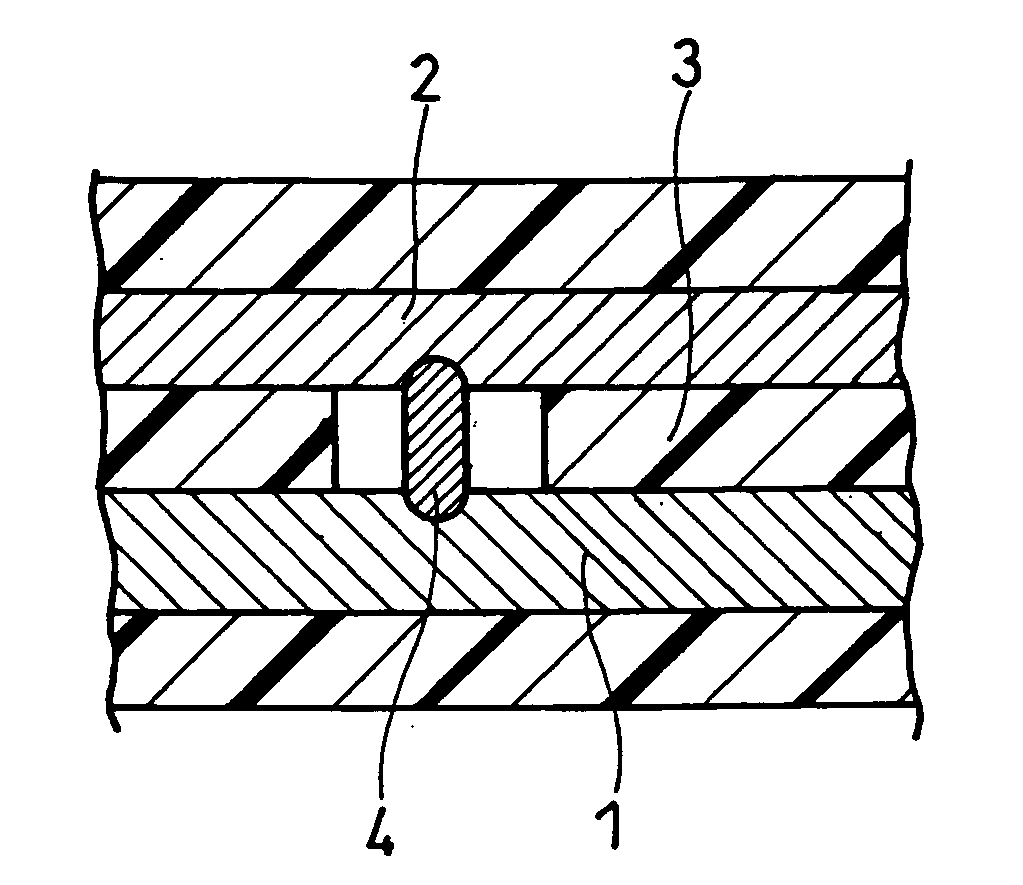Lithium secondary battery
a secondary battery and lithium battery technology, applied in the field of lithium secondary batteries, can solve the problems of difficult stably supply lithium secondary batteries, theoretical capacities cannot be considered very high, etc., and achieve the effect of reducing safety and increasing the energy density of the electrode group
- Summary
- Abstract
- Description
- Claims
- Application Information
AI Technical Summary
Benefits of technology
Problems solved by technology
Method used
Image
Examples
example 1
[0087] A lithium secondary battery was designed such that its working voltage range was from 2.5 V to 4.2 V (end-of-discharge voltage: 2.5 V, end-of-charge voltage: 4.2 V).
(i) Production of Positive Electrode
[0088] A positive electrode material mixture paste was prepared by stirring, with a double arm kneader, 5 kg of a lithium nickelate powder (median diameter: 20 μm) serving as a positive electrode active material, 1 kg of an N-methyl-2-pyrrolidone (NMP) solution (#1320 (trade name) manufactured by KUREHA CORPORATION) containing 12 wt % of polyvinylidene fluoride (PVDF) serving as a binder, 90 g of acetylene black serving as a conductive agent and a suitable amount of NMP serving as a dispersion medium. The positive electrode material mixture paste was applied onto both sides of a band-shaped positive electrode current collector comprising an aluminum foil with a thickness of 15 μm. The applied positive electrode material mixture paste was dried, and rolled with rollers to form...
example 2
[0093] A lithium secondary battery was fabricated in the same manner as Example 1, except that a SiO powder (median diameter: 8 μm) was used in place of the powder composed simply of silicon, and that the dimensions of the positive electrode and the negative electrode were changed as necessary based on the above-described design standard (i.e. with the working voltage range of the lithium secondary battery being set to 2.5 V to 4.2 V, and the volume of the electrode group being set to be the same as that in Example 1). The theoretical capacity of the battery was 3203 mAh, and the energy density of the electrode group was 824 Wh / L.
example 3
[0094] A negative electrode material mixture paste was prepared by stirring, with a double arm kneader, 4 kg of a powder composed simply of tin (Sn) (median diameter: 10 μm) serving as a negative electrode active material, 250 g of an aqueous dispersion (BM-400B (trade name) manufactured by ZEON Corporation) containing 40 wt % of modified styrene butadiene rubber particles serving as a binder, 200 g of acetylene black serving as a conductive agent, 100 g of carboxymethyl cellulose (CMC) serving as a thickener and a suitable amount of water serving as a dispersion medium. A lithium secondary battery was fabricated in the same manner as Example 1, except that this negative electrode material mixture paste was used, and that the dimensions of the positive electrode and the negative electrode were changed as necessary based on the above-described design standard. The theoretical capacity of the battery was 3395 mAh, and the energy density of the electrode group was 873 Wh / L.
PUM
 Login to View More
Login to View More Abstract
Description
Claims
Application Information
 Login to View More
Login to View More - R&D
- Intellectual Property
- Life Sciences
- Materials
- Tech Scout
- Unparalleled Data Quality
- Higher Quality Content
- 60% Fewer Hallucinations
Browse by: Latest US Patents, China's latest patents, Technical Efficacy Thesaurus, Application Domain, Technology Topic, Popular Technical Reports.
© 2025 PatSnap. All rights reserved.Legal|Privacy policy|Modern Slavery Act Transparency Statement|Sitemap|About US| Contact US: help@patsnap.com


